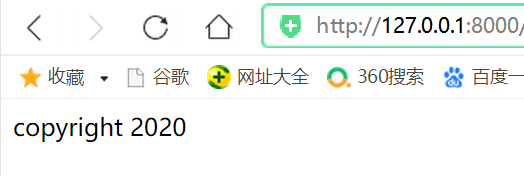Dates
-
{% now %}
{% now "m/d/Y" %}
copyright {% now 'Y' as current_year %}

该tag也可以接受Django的date 变量,比如{% now 'SHORT_DATETIME_FORMAT' %}--> 09/05/2020 10:59 p.m.
{% now 'SHORT_DATE_FORMAT' %}-->09/05/2020
{% now 'DATE_FORMAT' %}-->Sept. 5, 2020
Forms
在
